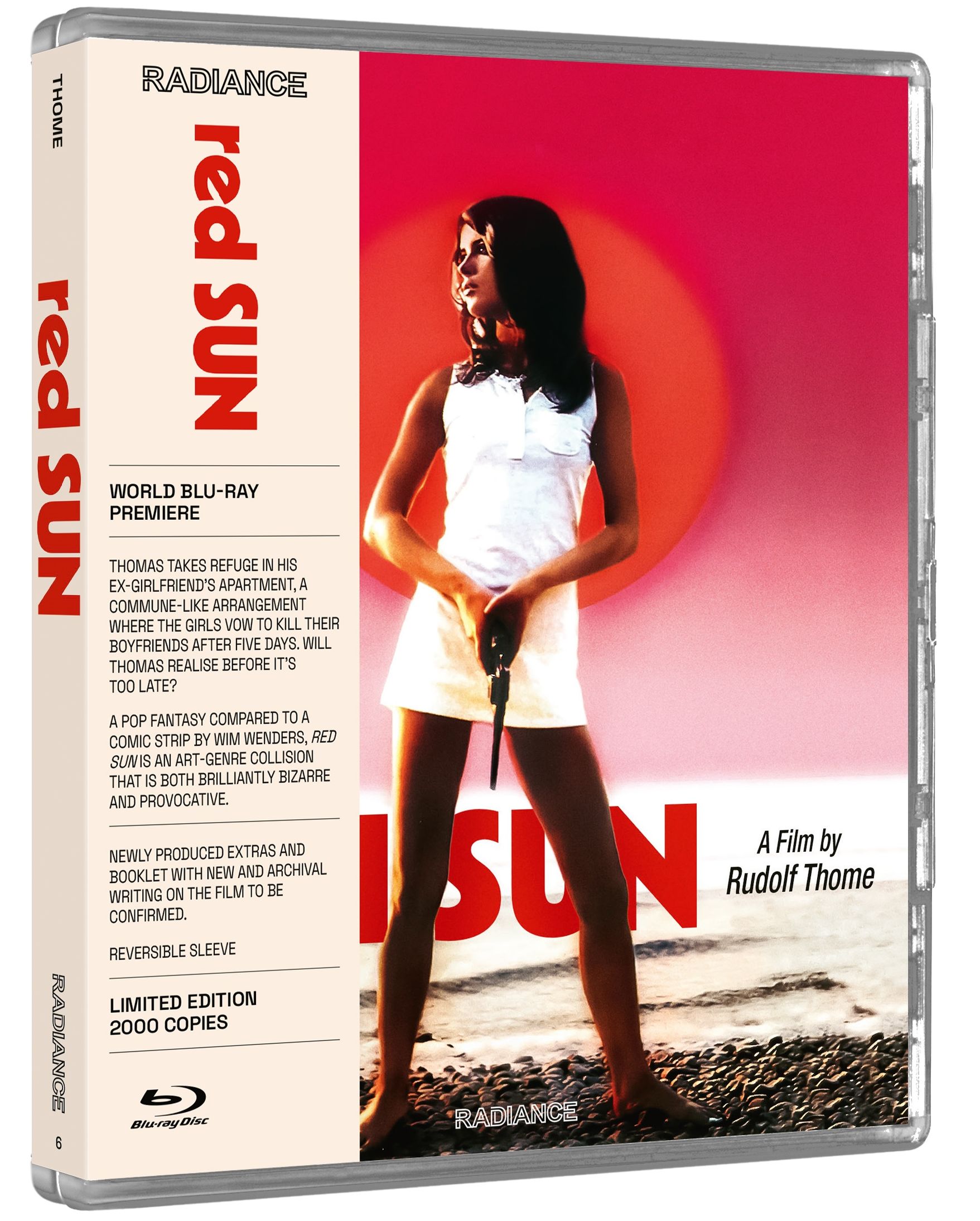Hitting blu-ray from the exciting new Radiance boutique blu-ray label comes a forgotten crime film from the time of the German New Wave. Let’s sit around the apartment, murder somebody and just chill out and enjoy, huh?
Thomas is a drifter aimlessly wandering through Germany when he runs into an ex-girlfriend of his who agrees to let him crash with her and her roommates in their shared apartment. He has no qualms mooching off her, not realizing that she and her friends have very radical ideals on the place of men in society and how they choose to deal with them. Over the course of the film, we see Thomas interacting with these women, at first not realizing the extremes to which they are willing to go in service of what is presumably a very leftist revolutionary ideology.
While this little known film is often lumped in with the German New Wave cinema of directors like Rainer Werner Fassbinder, Werner Herzog and Volker Schlöndorff, its director Rudolf Thome was actually part of a lesser known collective known as the New Munich Group. While both movements had a Brechtian approach to filmmaking with a detached and self-aware style, the New Munich Group gleaned from more western influences that the more well-known German New Wave typically eschewed. In fact, the New Munich Group were much more like the French New Wave and especially Jean-Luc Godard in how they used the tropes of American crime films and other genre fare coupled with a spare but playful aesthetic. Ren Sun in particular is a prime example of this with its pop art set design and scenes of violence treated with the same light and distant tone as scenes of characters sitting around eating breakfast. Red Sun does seem to have a neo-liberal extremist subtext to it also. We see scenes of the women in the apartment making and testing explosives, but it’s all done with such a blasé attitude that we feel no real sense of urgency. One notable scene features a casual conversation between two of the women in the foreground as one of them attaches a silencer to a pistol. Meanwhile there’s a man bound and gagged in the background, looking rather unconcerned about the whole ordeal. She then walks over and shoots him in the head and continues on as if she’s just squashing a bug and moving on. Really though, that I think is the intention. This is how these ladies see men, as bugs to be squished when they get in their way, with no emotional attachment to them whatsoever. Based on the extras included with the film, it seems as though Red Sun was quite polarizing on its release. Many critics panned the film for its lethargic pacing and plot that held no gravitas. One gets the sense that these critics may have felt they had been trolled in some way. Meanwhile others such as director Wim Wenders absolutely loved it, raving that it was one of the best films of the year. I can certainly see why it’s so divisive. Wenders saw it as a brightly colored comic strip satire (and the way it’s framed with all the static medium shots, I can see the comparison). While I’m not sure I’d go that far, given that it lacked the energy to come off like a comic strip, purely on a visual level it makes sense. This is a film I like the idea of more than actually experiencing it. It is, by design, remote, glacial and uninvolved with its own narrative which makes it hard to engage with on any kind of an emotional level. Having said that, lead actress Uschi Obermaier is cold, sexy and magnetic despite the film’s every attempt to sap her energy.
On the video front, this film has a very nice transfer, restored from the original camera negative. While much of the film takes place in the girls’ apartment, every room is painted a different color and the transfer sets off these juxtapositions quite nicely. The LPCM 2.0 Mono audio track is also fine if not exceptional. I did note a little audio hiss occasionally, particularly at the beginning of the film, but it’s barely noticeable unless you’re really paying attention.
The extras here are quite good and is one area where Radiance really sets itself up as a boutique label to watch for. We have a scene-specific audio commentary by the director which is nice but actually not essential. You can glean most of where he stands on the film from the interview with him included in the nice booklet. Additionally we have a visual essay entitled Rote Sonne: Between Pop Sensibility and Social Critique by film scholar Johannes Von Moltke that is a very interesting and engaging look at the appeal of the film and the subtext and meaning behind it. Even more interesting to me was the 50-minute visual essay by Margaret Deriaz on the history of ’60s German cinema. I actually learned a lot about the time period I wasn’t previously that familiar with. The booklet included with the disc also has a bevy of information about the film including a very good essay by Samm Deighan, the aforementioned interview with director Rudolf Thome, letters to the German Film Evaluation Office by Wim Wenders and Enno Patalas extolling the film’s virtues despite the office rejecting it as a film of merit, and excerpts from reviews of Red Sun by various critics. All in all, an excellent group of extras that go a long way toward illustrating the importance of preserving this lesser known German film.
Radiance has done an excellent job with this film and are to be commended. The film itself is going to be a hard sell to the average film buff but may find fans in those who can appreciate the more self-reflexive stylings of the French New Wave.

